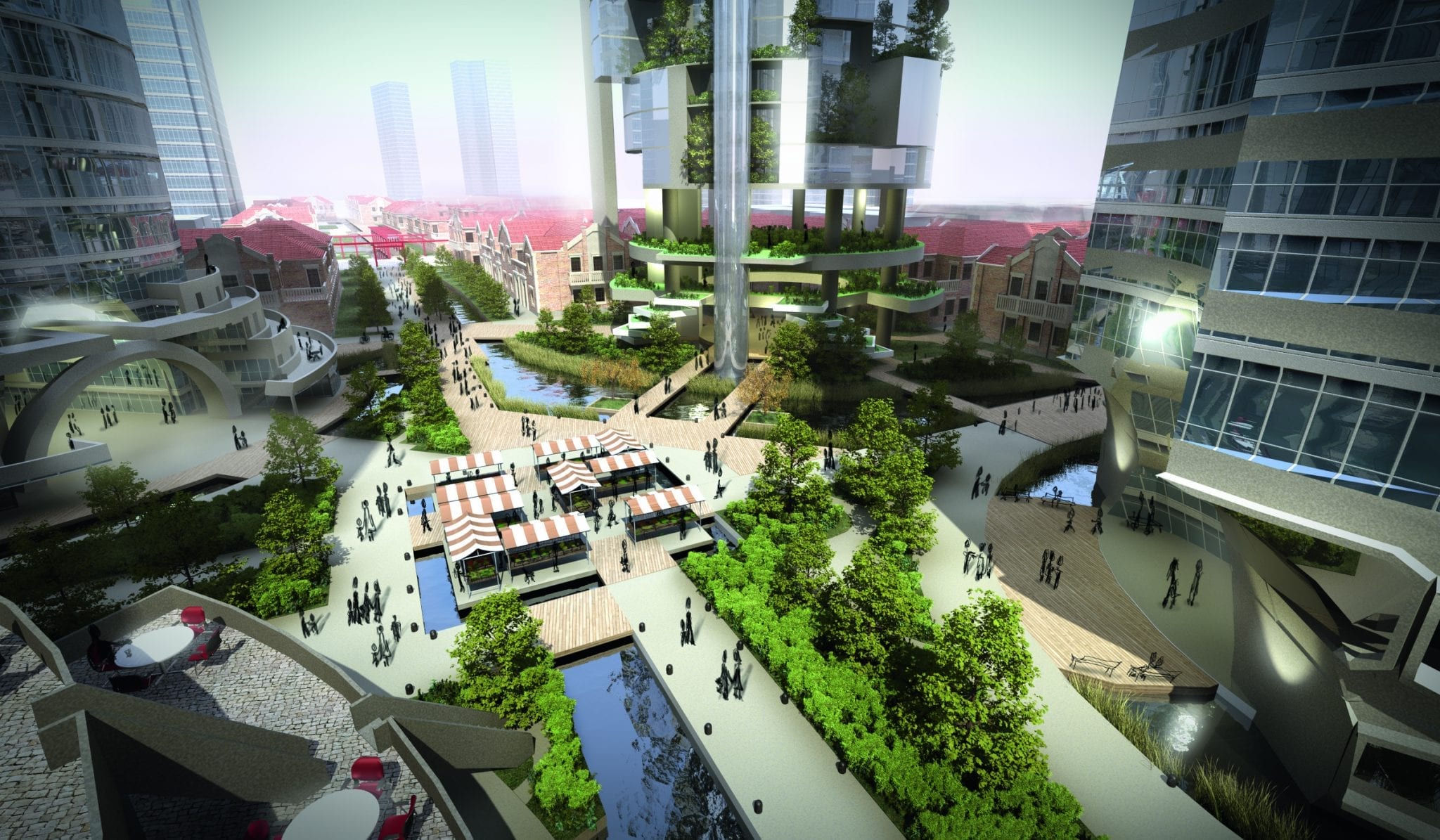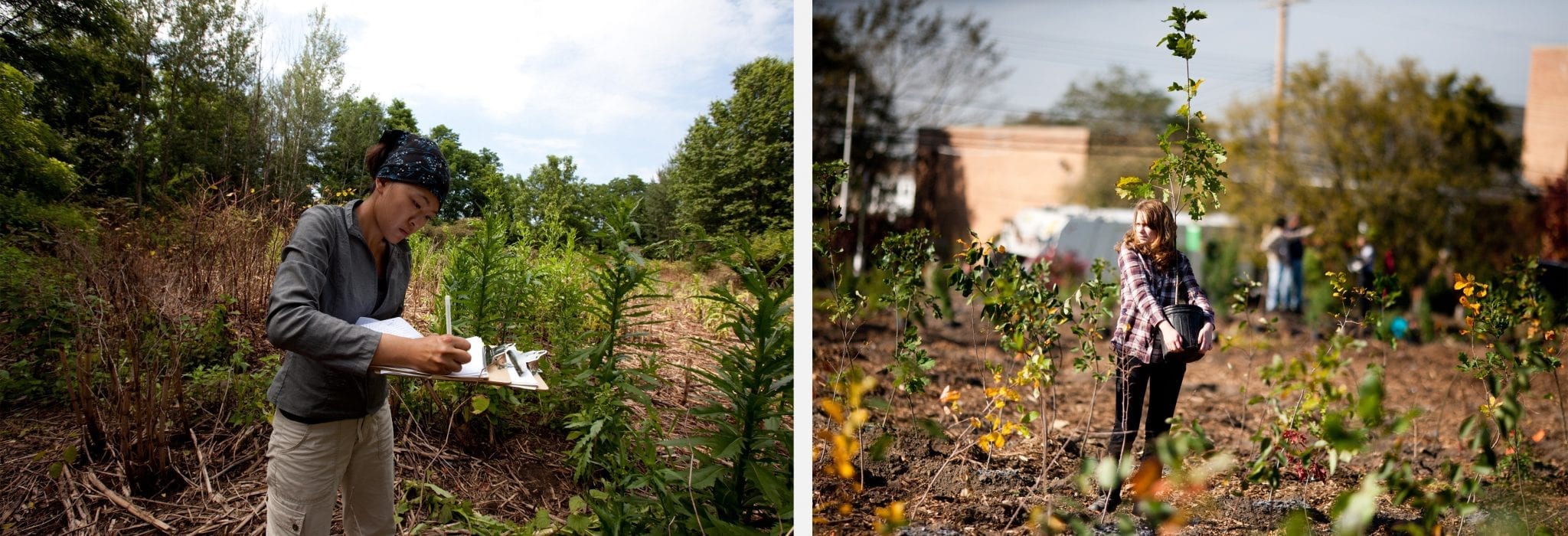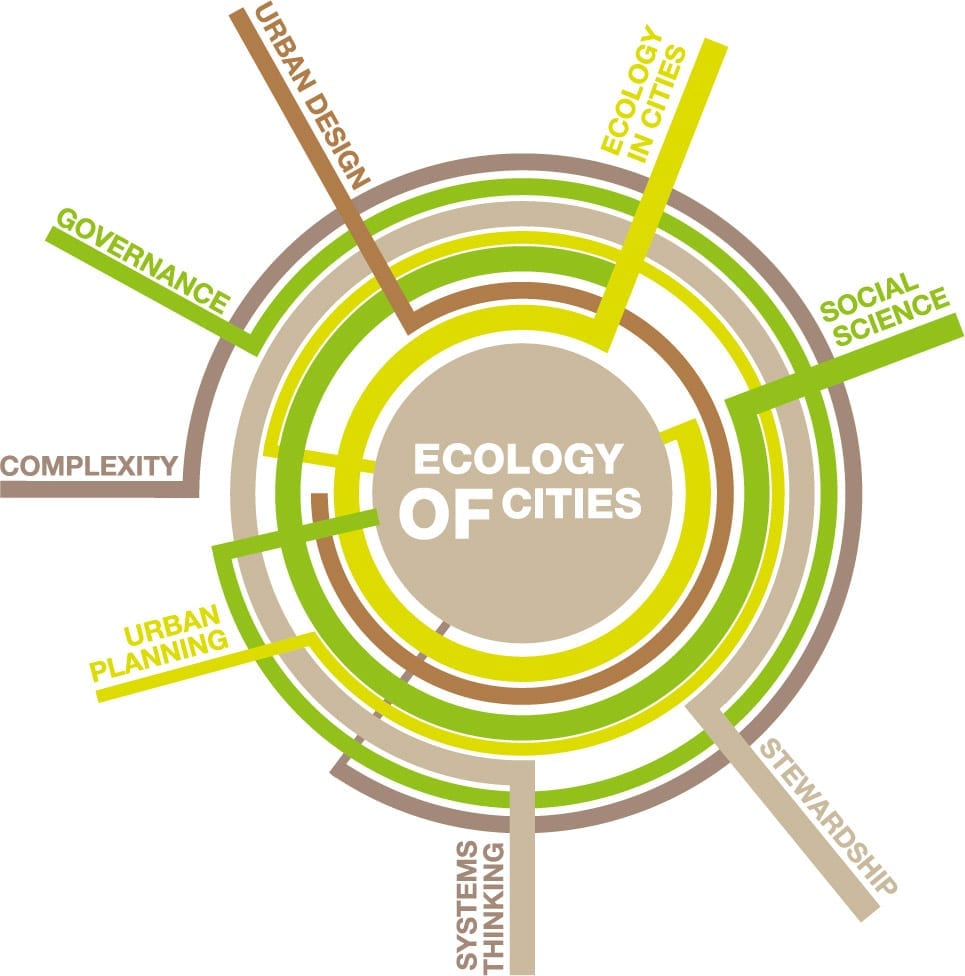Urban Ecology
How can cities and urban areas confronted with climate change, urbanization and population growth create more sustainable futures? Planning and developing sustainable cities is a high priority around the world and a crucial component of global sustainability given rapidly increasing numbers of urbanites. Leaders and decision-makers are faced with difficult choices on how to simultaneously make cities more resilient and more sustainable in fast-changing social, environmental, and economic climates. To make matters more difficult, cities are not simple to govern. Cities are truly complex systems with so many interacting components that it is difficult to know how any decision about one neighborhood in the city will impact other neighborhoods, or the city as a whole. How can we be sure that the right decisions are being made so that our cities as a whole become healthier, more livable, and more equitable places for humans to thrive?
Urban sustainability has always been an uphill battle because cities have to import vast quantities of materials and resources in order to survive. The Living Planet Report (WWF) calculates that cities and urban areas consume 75% of the world’s natural resources and discharges an equal amount of waste, creating huge ecological footprints. Yet, energy efficiency, technological innovation, and decreased environmental impact can all be maximized in dense urban developments and provide evidence that though complete sustainability is perhaps a utopian goal, improving sustainability is very achievable, especially in cities.
An Approach to “The Future We Want”.
Many resources and processes that cities need cannot be imported and must be provided for inside city boundaries, including in many cases drinking water, local food production, flood mitigation, storm water absorption, climate regulation, and more. Scientists are finding that all of these so called “ecosystem services” affect our quality of life and demonstrate the important role of urban biodiversity and ecosystems. The UN Convention on Biological Diversity just published the first global assessment on urban biodiversity and ecosystem services, the Cities Biodiversity Outlook, which emphasizes the importance of local urban ecosystems to human health and well-being in cities.
Creating sustainable ecosystems in cities is critical to achieving global sustainability. In some cases, it is only in cities where we see the necessary level of environmental leadership that allows innovation and truly sustainable practices that remain intractable at the global level. Climate change is perhaps the easiest example to illustrate with cities clearly leading the way in climate change adaptation and mitigation, while global governance continues to stall. Here too ecosystems in cities have a role to play in absorbing the impacts of climate change and providing adaptive capacity for making neighborhoods and whole cities more resilient to climate and other urban stressors.

A Social-Ecological System Science
Ecologists have been thinking in systems at least since Arthur Tansley first used the term “ecosystem” in 1935. The Odum brothers (Eugene and Howard) pioneered systems approaches in ecology in the 1950s and 1960s. More recently the emerging field of urban ecology, which explicitly includes humans as fundamental components of systems, has taken a socio-ecological systems approach to the study of cities. Cities – like New York – are the classic example of a complex socioecological system and a perfect place to test the urban ecology idea that cities are ecosystems – simply ecosystems with humans in them.
Cities are truly complex systems that are made of a whole host of interacting parts… including ecological, social, economic and technological infrastructures.
Though urban ecology has older roots in China and other places around the world, the modern version emerged in post-WWII Berlin when ecologists began examining how vegetation patterns in the city were affected by urban development. Urban ecology in the United States took off a bit later when the urban-rural gradient study of the New York Metro area was initiated by Mark McDonnell and Steward Pickett in the late 1980s and early 1990s. Insights from this work demonstrated, like the early studies in Berlin, that urban ecosystems are like ecosystems anywhere else, though they do have different characteristics, processing rates, temperatures, and organisms.
Since then the field has evolved rapidly into a scientific discipline that links social and ecological approaches with a goal to achieve livable, sustainable, and just cities where both human and non-human species can thrive. This field is beginning to demonstrate a novel capacity to make sense of the multiple intersecting kinds of information flows, from human social patterns and ecology dynamics to urban form and climate data, which together influence the patterns and processes of urban systems affecting so many aspects of our lives.

Ecology In and Of Cities
Ecology in Cities was the first and still very important translation of 150 years of ecological science into urban contexts. At the same time that Jane Jacobs and others were writing about the need to rethink urban spaces in ways that were more ecological and more just, ecologists were beginning to ask how urban climates and city form influenced ecological patterns and processes in cities. This ecology in the city forms the foundation of urban ecology and remains one of the fundamental sources of urban ecological understanding important to building a theory and a science of cities. In 1997, urban ecology was given a significant and needed boost when the U.S. National Science Foundation extended its successful Long-term Ecology Research (LTER) program to the first ever urban sites in Phoenix and Baltimore.
…urban ecosystems provide important water purification, local food production, stormwater absorption, urban heat island regulation, flood protection…
Ecologists were also going beyond ecology in cities to begin developing a theory and new conceptual approaches to an ecology of cities. Ecology of the city starts with the premise that urban areas are fundamentally ecosystems and they can be understood as we would study any ecosystem. And yet, urban ecosystems are studied differently than other kinds of ecosystems in that an ecology of the city approach explicitly includes humans as fundamental components and drivers of change in the urban system.

Ecology of cities studies have dynamically interacting socio-ecological components (with social being broadly defined to include social processes, institutions, and structures as well as technological and built infrastructures), that together create the urban patterns and processes we observe in cities. Since the launch of the LTER sites, new urban ecological methods and approaches have been pioneered across the globe that link ecology explicitly to planning, management, and urban design, and incorporate theoretical breakthroughs in complexity, resilience, socio-ecological systems, and sustainability science.
A Theory of Cities
Though we are still far from a robust theory of cities, research on complex systems pioneered at the Sante Fe Institute has begun to shed light on some of the fundamental patterns of urban systems and how, for example, population size relates to urban growth, rates of innovation, and the pace of life in cities. Still, a robust theory of cities will have to go further and provide methods and tools that provide predictive capacity with decision support tools that urban leaders can use to plan more sustainable development trajectories for their cities.
Creating sustainable cities is critical to achieving global sustainability.
Linking urban ecological approaches with urban planning and design is critical to more fully connect the social and ecological aspects of city systems with the power of complexity science. Bridging the multiple intersecting lines of research on how urban systems are structured, how they function, and respond to disturbances can create new possibilities for scientists to work together to solve difficult urban problems. The goal here is to create a science of cities that can provide the necessary scientific input on how to design and build cities across the globe to be resilient to current and future effects of climate change, as well as other urban stressors.
Urban Ecosystems
Ecosystems will play a crucial component of resilient and sustainable urban life. In fact, we are discovering that ecosystems play a larger role in the city than previously acknowledged. Since the Millennium Ecosystem Assessment report in 2005, ecologists have been hard at work assessing, mapping, and valuing the services that ecosystems provide to humans. Though monetary value estimates are difficult to make, a study in the journal Ecosystem Services concluded that monetary benefits can range from $500 to $350,000/ hectare per year (depending on the biome) with global totals in the trillions.
And yet, we have only recently started to assess the benefits city residents receive annually from urban ecosystems. Still, urban ecologists and related scientists have identified that urban ecosystems provide important water purification, local food production, stormwater absorption, urban heat island regulation, flood protection, enhance real estate value, improve human mental and physical health, and serve as important areas for recreation, contemplation, and relaxation. Research in this area is providing real advances in understanding the spatial mismatches in supply and demand for urban ecosystem services, equity in access to these services, and developing new tools and methods for assessing, mapping, and valuing the services ecosystems provide to cities.
Building Resilience
Ecology has yet to provide a complete theory and science of cities that can guide decision-making at the scale at which it is needed, and in a way that can deliver resilience to climate change and improved sustainability over the long-term. However, we have made significant progress in the last 30 years of this young field of study. Urban ecology is clearly emerging as a discipline that can bring planning, design, ecology, social science, and complexity science under a more unified research framework to create new tools and knowledge to support urban governance, policy, and planning. The more we recognize the complexity inherent in urban systems the more we realize that we are not going to get lucky by creating great urban designs and plans around single features of the city, or to meet individual goals.
For cities to be resilient and for resilience to help improve sustainability, we need to develop our cities in ways that can leverage complexity and the interactive nature of urban systems across the globe. Ultimately, creating sustainable cities is critical to achieving any measure of global sustainability. It simply will not happen without cities leading the way, and this requires accepting the challenges we face head-on and by harnessing systems and ecological approaches to meet those challenges.